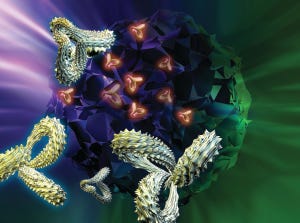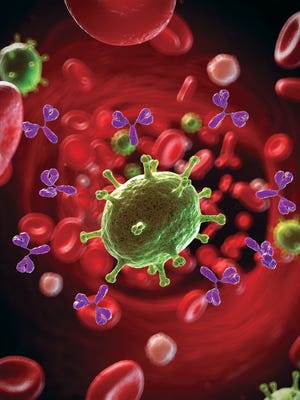April 2017 Supplement
Protein structure is vital to function — and thus a critical parameter for determining biosimilarity. (STOCK.ADOBE.COM)
In a just a few years, the biopharmaceutical industry has gone from questioning the feasibility of “follow-on biologics” (around the time of BPI’s first issues) to fearing them (when we published our first supplement on the topic in 2013) to the acceptance and strategizing of today. Perhaps because of its more socialized medicine, Europe led the way in biosimilar regulation and approved its first such product nearly 10 years before the first US biosimilar launch in 2015. In between came 2009 approvals in Canada and Japan. And the World Health Organization adopted its own guidance in 2010 to encourage regulatory harmonization across markets.
Amgen is one innovator company that has embraced the concept wholeheartedly, calling it “our next chapter in healthcare” in a 2016 report (
1
). That publication cites product characterization, preclinical studies, nomenclature, reimbursement, and reg...
Electrospray-ionization mass spectrometry (ESI-MS) is a well-established tool for biotherapeutic analysis. It draws intact proteins or peptide ions into the vacuum of a mass spectrometer, where the ion mass is measured. Electrospray ion-mobility mass spectrometry (ESI-IMS) introduces ions into a low-pressure gas, where the effects of aerodynamic drag reveal their shape. This technique is just emerging as a valuable tool for characterizing intact proteins, even though for a decade it’s been the basis of a commercially available medical diagnostic test that measures the size distributions of lipoproteins for cardiovascular risk assessment.
A growing body of evidence shows that ion mobility provides critical information about intact antibodies, protein–protein interactions, and protein aggregation. It leverages some concepts behind ESI-MS (e.g., sensitivity, dynamic range, and reproducibility) but differs in that ESI-IMS measures protein shape directly and rapidly detects subtle changes in higher-order struc...
The pipeline of follow-on (biosimilar and biobetter) products in development for the US, EU, and other major markets
is very healthy
. It includes nearly 800 biosimilars, about three-quarters of which are presumed to be targeted for major markets, and about 500 biobetters in development. Nearly 1,200 follow-on biopharmaceutical products in the development pipeline are intended to compete with more than 100 currently marketed biopharmaceuticals.
This is not just an opportunity in the Western world; biosimilars development is expanding globally. But defining which countries are “all in” strategically with biosimilars depends on what parameters define efforts and progress. Some parameters indicative of a country going “all-in” include the following:
Further, it is important to define the difference between how “biosimilars” are defined for sale in US, EU, and other developed markets compared with those for emerging markets. Some products are on track for approval in major highly regulated markets (e.g., Uni...
WWW.GRAPHICSTOCK.COM
Biosimilars have become common on pharmacy shelves in Europe. The first biosimilar product — Sandoz’s Omnitrope version of Lilly’s Humatrope (somatropin) — was approved by the European Medicines Agency (EMA) in 2006. In the decade that followed, more than 20 biosimilars have gained regulatory approval in Europe. The first biosimilar monoclonal antibodies (MAbs) — comparators to Janssen’s Remicade (infliximab) — were approved in 2013.
The pace of approvals in the United States has been much slower. The US Food and Drug Administration (FDA) agreed upon a 351(k) pathway for biosimilar approval in 2010 and published draft guidance documents two years later. Yet it was not until 2015 that Sandoz’s Zarxio biosimilar comparator to Amgen’s Neupogen (filgrastim) got the go-ahead for US marketing. Multiple filgrastim biosimilars (including the Sandoz product under the brand name Zarzio) already had been licensed in Europe before the US approval.
Since then, the number of approvals has rapidly i...
The function of a MAb depends on its binding to a cell surface. (STOCK.ADOBE.COM)
The modern age of biologics began 35 years ago with the approval of Lilly’s Humulin product — a biosynthetic form of human insulin derived from recombinant DNA and microbial cell culture (
1
). Today, about a quarter (27%) of the drugs approved yearly by the US Food and Drug Administration (FDA) and European Medicines Agency (EMA) are biopharmaceuticals: primarily monoclonal antibodies (MAbs), but also vaccines, blood products, and (recently), advanced therapies based on genes and cells. A decade ago, the average annual approvals of biopharmaceuticals made up only 13% of overall products approved (
2
).
One industry-representative organization, the Pharmaceutical Researchers and Manufacturers of America (PhRMA), has said that more than 900 biologics targeting cancer, infectious diseases, autoimmune conditions, and heart problems are in development (
3
). More than 50 investigational MAb therapeutics currently are undergoing ...








